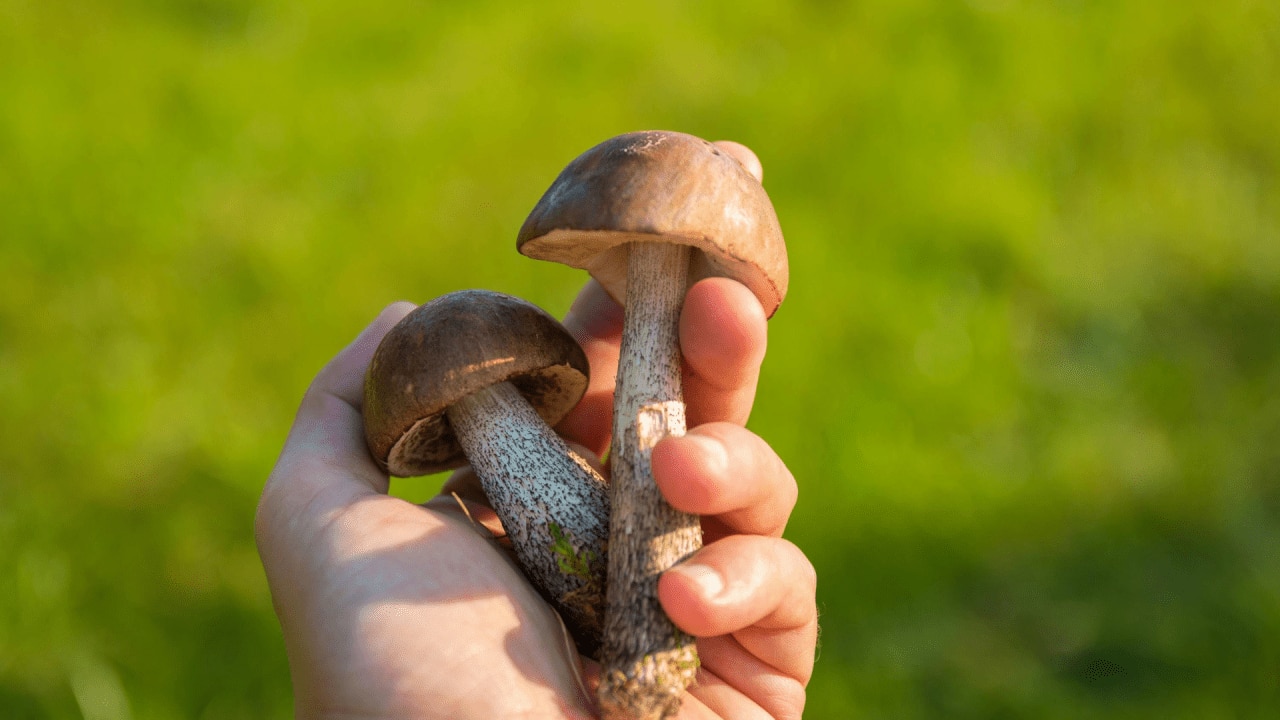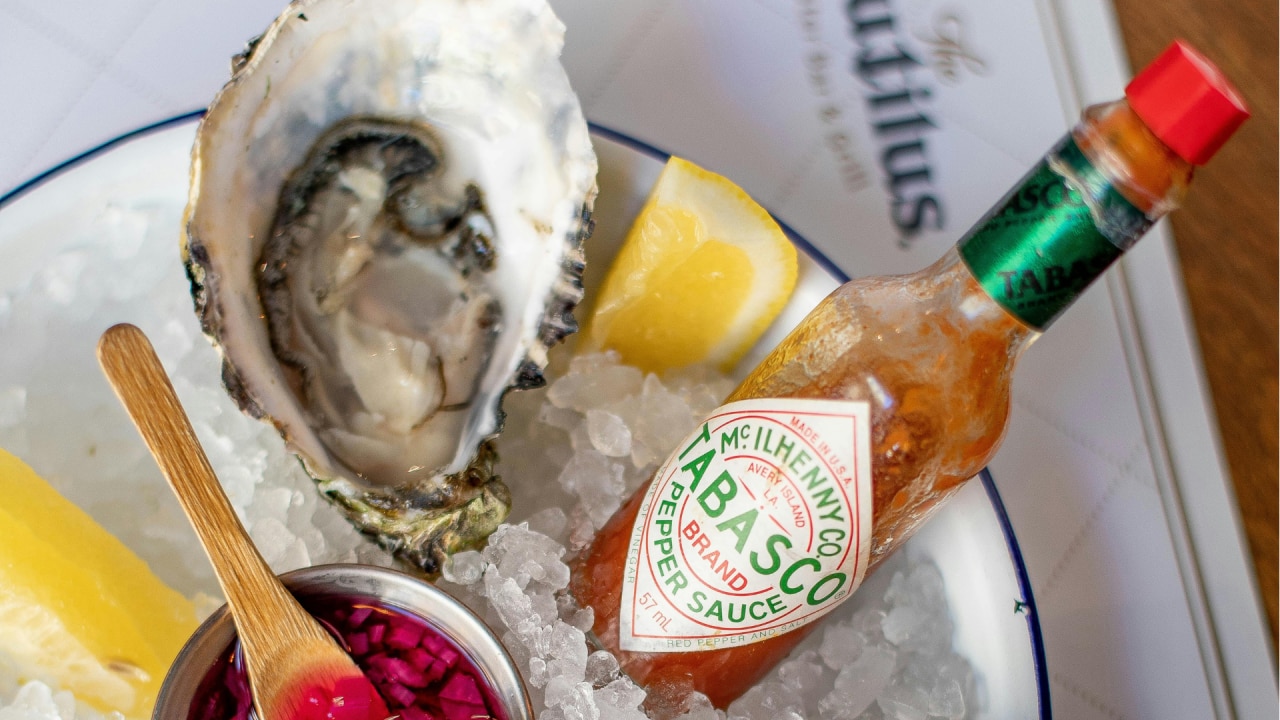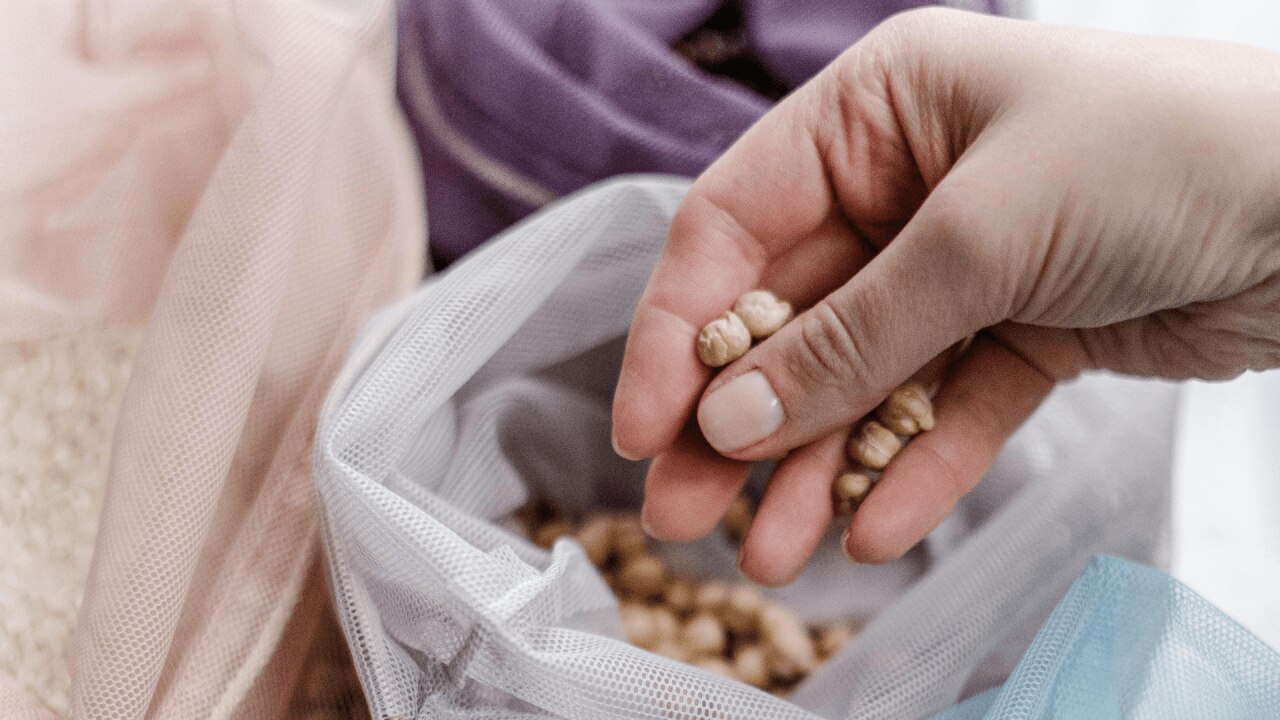20 simple food tweaks that will reboot your health
Small changes, big differences
As a medical doctor, co-founder of the Zoe app, a health research platform analysing users’ gut and blood health, and the author of ‘Food for Life’, Tim Spector knows a thing or two about the power food has on our health. Here he reveals his top food changes that can do a world of good.
Want to know the real recipe for better health? It’s all about small, incremental changes. Tweaks to my meals have helped me vastly improve my diversity of foods and I’m probably in better health now in my 60s than I was in my 30s. In fact, everyone can benefit from these minuscule changes, rather than putting themselves through the pain of restrictive eating.
Not that the latter is even sustainable. It’s likely most of us have already abandoned (or at least seriously considered giving up on) the big New Year’s resolutions to drink less and train more. Similarly, the ever-common crash diet (that usually ends in disaster) is counterproductive because after drastically restricting your calorie count in an effort to lose some extra kilos, your weight tends to rebound with a vengeance.
Instead, introducing small nudges that can be sustained every day – and help make you feel better without restricting your lifestyle – is a much more effective approach. And as science has proven that setting realistic goals is more effective than deciding to stop a behaviour altogether, here are some small food changes you can make today that will have the biggest impact on your health. Ready? Then let’s get started.
Like what you see? Sign up to our bodyandsoul.com.au newsletter for more stories like this.
#1. Try to eat 30 types of plant each week to ensure diversity
We all know we’re supposed to have two serves of fruit and five serves of veg every day, but according to research conducted by the Heart Foundation, less than 10 per cent of Aussies actually reach this daily target. We need a new plan of attack. So, instead of focusing on your “two and five”, a better strategy is to aim for 30 different plants each week.
Gut microbes thrive on different types of fibre, so to make sure you’re supporting gut health by having as many beneficial gut microbes as possible, diversity of fibre is crucial. Variety is fun, especially when you realise that the 30 a week can include fresh herbs to add to your cooking, spices, crunchy seeds and nutritious nuts, earthy mushrooms and tangy olives, as well as apples, pears and seasonal vegetables such as Jerusalem artichokes and cabbage.
#2. Add mixed spices regularly to your cooking for gut health
Spices are unsung heroes, bringing flavour, colour and beneficial plant chemicals called polyphenols to our diet. As well as fibre, our gut microbes use polyphenols as fuel to create the myriad chemical metabolites, also known as postbiotics, which are essentially our own personal pharmacy for our immune system.
Well-known spices such as turmeric and saffron - both easy to find at Woolworths, the latter for as little as $1 a jar - have had very good PR for their anti-inflammatory effects, and more recent trials have shown that just adding a teaspoon of mixed spice blend to your food every day can affect your gut microbiome composition – and your metabolism – for the better.
One of the simplest things we can do for our gut microbes and our taste buds? Experiment with spice and make adding these polyphenol powerhouses to our food a new daily habit.

#3. Use extra virgin olive oil for cooking and dressing your food
Cooking oils have been a topic of debate for years due to the reported dangers of eating highly oxidised oil compounds resulting from high-heat frying. The good news? Most of the scares about these compounds don’t apply to home cooking, as the harmful compounds usually only form after reheating oil many times at very high temperatures for deep frying.
Extra virgin olive oil also has a secret weapon against oxidation – its high polyphenol content. Though it has a lower smoke point than other oils, this is rarely a problem for cooking most foods, and the fact that it has up to 600 times more polyphenols than all other oils easily cancels out any negative effects.
So, even if you’re cooking extra virgin olive oil at a high temperature in your oven (over 200C), it will still have more beneficial compounds than a comparable seed oil or butter. It’s no secret that the longest-living populations use this olive fruit juice for everything, and we know that it makes sense scientifically to do so.
#4. Sunbathe your shrooms before eating them
A simple but effective way to increase vitamin D2 in our diet is to sunbathe our mushrooms. Yes, really! Mushrooms are rich in a natural vitamin D precursor and it turns out that exposing them to sunlight helps create plentiful vitamin D2. As a nation, we spend hundreds of millions every year on supplementing our vitamin D intake with pills that are unlikely to be as effective as this method.
Not a fan of mushies? Try switching from regular to a2 milk, which comes from cows that only produce milk with a2-type protein (‘normal’ milk also has A1). It contains vitamin D and other key nutrients, and may be better tolerated if your digestive system doesn’t love dairy.

#5. Eat the colourful outer parts of your veg, don’t peel and discard them
Many of us will discard the outer leaves of our broccoli, cauliflower heads and mushroom stalks, or peel apples and pears before cooking and eating them. The trouble is that those external leaves and skin are where most of the plants’ protective chemicals are made, to help the plants thrive even when the outside environment is too cold, too dry or too dark.
Pesticides in non-organic veg are found on the outer parts, so always rinse them well; you can soak your veg in some bicarbonate of soda and water to remove the remainder, and then cook this tough and colourful outer armour. Kiwi peel is one step too far for me, but some of my friends say it adds extra bite and texture – so give it a try.
#6. Use miso for flavour instead of a stock cube
The trusty stock cube adds flavour, salt and that all-important umami depth to many of our dishes. But there’s an alternative flavour enhancer that also packs an umami punch and is one of the oldest fermented foods in the world: miso.
This sticky, dark paste is a perfect addition to soups, stews, sauces and dressings, and will maintain its probiotic properties if it’s added at the end of cooking (avoid boiling temperatures that kill it). Adding probiotic foods (live microbes) such as miso to our cooking is an excellent way to support our gut health.
#7. Choose Tabasco chilli sauce
Condiments have made it easy to add a little extra zing to meals, but we’re often quick to add sugar-rich ketchup and pickles to our plates. But there is one condiment – made in the USA, but perennially popular across the globe – that stands out for its high amounts of beneficial plant chemicals from the mix of spices and peppers it contains, and it is also a fermented food. The humble little Tabasco bottle has found its way back onto my kitchen shelf to add that extra zing for my gut microbes and my taste buds, without the added sugar.

#8. Chop onion and garlic 10 minutes before cooking
Why? This preserves the beneficial polyphenols called sulforaphanes from breaking down in the cooking process.
Chopping onions and garlic at the very beginning and leaving them to rest before using them is an effortless way to preserve the beneficial sulforaphanes that normally break down when they are cooked. A simple tip is to batch-chop and then freeze your garlic and onion for next time, so you always have a sulforaphane-rich reserve in your freezer ready to go.
#9. Swap boring green iceberg lettuce for colourful, polyphenol-rich types
Iceberg lettuce may have a high water content and contribute to keeping us well hydrated, but it is lacking in the beneficial plant compounds that give other lettuces, such as lollo rosso, their distinctive colours and flavour. Polyphenols are fantastic fuel for our gut microbes, so choosing a lettuce that does more than just last longer than your New Year's resolution is an easy swap to make.
#10. Choose spelt or chickpea pasta for a fibre boost
Pasta is delicious, but it’s also a food that causes blood-glucose spikes for many of us. Change up your usual pasta dish by choosing a spelt or chickpea pasta for added fibre, a lower blood-sugar peak and less stress on your body.

#11. Swap pasta for beans/legumes and use the same sauces
Some of the best sauces are found in traditional pasta dishes. Eggplants with tomatoes, basil and salted ricotta for pasta alla Norma, spinach, nutmeg and ricotta with cannelloni. But we don’t eat enough beans or legumes and a simple way to make eating beans delicious is to combine them with your favourite sauce.
Start slowly by adding just a spoonful of beans, such as butter beans, and as your gut microbes adapt to having beans in the diet, you can slowly increase the proportion. Beans are a wonderful source of protein, fibre, polyphenols and complex carbohydrates, and they’re super-cheap; we’d all benefit from eating more of them.
#12. Use slow-cook, steel-cut oats for breakfast rather than the instant variety
Instant oats are processed to make them quicker to cook, but that processing also means the sugar they contain is faster to absorb into our blood glucose. This is why many of us will have a big sugar peak after a bowl of instant oats, especially when cooked in water and topped with a sweetener like honey.
To enjoy a warm bowl for breakfast, opt for the minimally processed steel-cut kind, which takes longer to cook but offers so much more in terms of flavour and nutrients, such as B vitamins and fibre. Add seeds, nuts and fresh fruit to the porridge, avoiding sugar, syrups and jams that are high in freely available sugar.
#13. Steam your veg minimally to maximise nutrients
I grew up eating boiled mushy green beans and broccoli, which were not only unexciting to eat, but had had most of their nutrients boiled and then drained out of them by cooking in large amounts of water. Many plant nutrients are water-soluble and sensitive to high heat, so to preserve them when cooking, simply lightly steam in minimal water for a couple of minutes, leaving their nutrients and crunchy texture intact.

#14. Use frozen peas and green beans as cheap, healthy alternatives
As soon as greens are picked, they start to lose their nutrient content as oxidation takes place. The benefit of frozen veg? They’re picked and frozen within hours, so the oxidative process is stopped and nutrient content is preserved.
Frozen veggies also last a long time in the freezer: perfect for those looking to improve their plant intake while being mindful of their budget and decreasing food waste.
#15. Add small amounts of fermented foods to your daily plate
Fermented foods are now easy to buy, and easy to make at home for very little cost. What’s encouraging is that we only need a little bit of fermented food in our daily diet to feel the benefits, so putting a little kefir in your yoghurt, a pinch of sauerkraut on your salad or cheese, or a teaspoon of miso in your soup is an easy way to achieve this addition to your diet.
Swapping a soft drink for kombucha, which is fermented tea, is another easy way – and better for your glucose metabolism, too.
#16. Always eat full-fat yoghurt without added flavours or sweeteners
Food companies have changed the humble plain yoghurt into hundreds of different food products, most of which are unhealthy. There are all sorts of flavours, from toffee to cranberry, and versions that are low-fat, high-protein, low-sugar and everything in between.
A lot of these flavoured and altered yoghurts have additives and sweeteners and fall better into the category of ultra-processed foods, especially those that are aimed at children. Going back to eating natural, live yoghurt is one of the simplest swaps we can make for our health, especially for kids.

#17. Savour dark chocolate with 70 per cent cocoa rather than the milk variety
Chocolate has long been vilified as a “bad” food that contributes to unhealthy diets. The truth is that dark chocolate, containing at least 70 per cent cocoa, is actually good for us. Research shows it’s good for our gut health, our blood vessel health and is even good to consume in pregnancy, not to mention its positive impact on our mood and taste buds.
Enjoy a couple of squares of good-quality chocolate and train your taste buds to savour the bitter complex flavours of the beneficial polyphenols unique to dark varieties.
#18. Drink a single glass of red rather than white wine or beer for polyphenols
Drinking alcohol is generally considered harmful, as the alcohol and its breakdown products are pro-inflammatory and neurotoxic. Not all alcohol is created equal, though: red wine is known for its resveratrol content – a polyphenol that is good for our gut bugs and biology – and it has hundreds of other similar compounds, too.
If you’re a beverage fan, choosing red wine in moderation helps to mitigate some of the negative effects. Enjoy a glass with a meal to provide benefits for your gut and heart.
#19. Choose unpasteurised or artisan cheese instead of the highly processed stuff
Cheese is one of the original fermented foods with which we have lost touch – we were wrongly told that it was unhealthy. Originally a way for us to preserve milk as a portable, nutrient-dense food, cheese has now been modified to become cheese strings, cheese slices and processed cheese blocks that have no probiotic strains left.
Unpasteurised cheeses and artisan cheeses, as well as those created from pasteurised milk by adding chosen culture strains, all have live probiotic strains in them. They also taste better!
#20. Pick sauerkraut without vinegar to get the live microbes
Many pickled vegetables are preserved in vinegar. The problem with that? Vinegar kills microbes, so when buying sauerkraut and other fermented vegetables, make sure they haven’t had vinegar added to them. The tangy and more interesting flavour comes from the fermentation products of traditionally fermented vegetables.
More Coverage
Originally published as 20 simple food tweaks that will reboot your health




